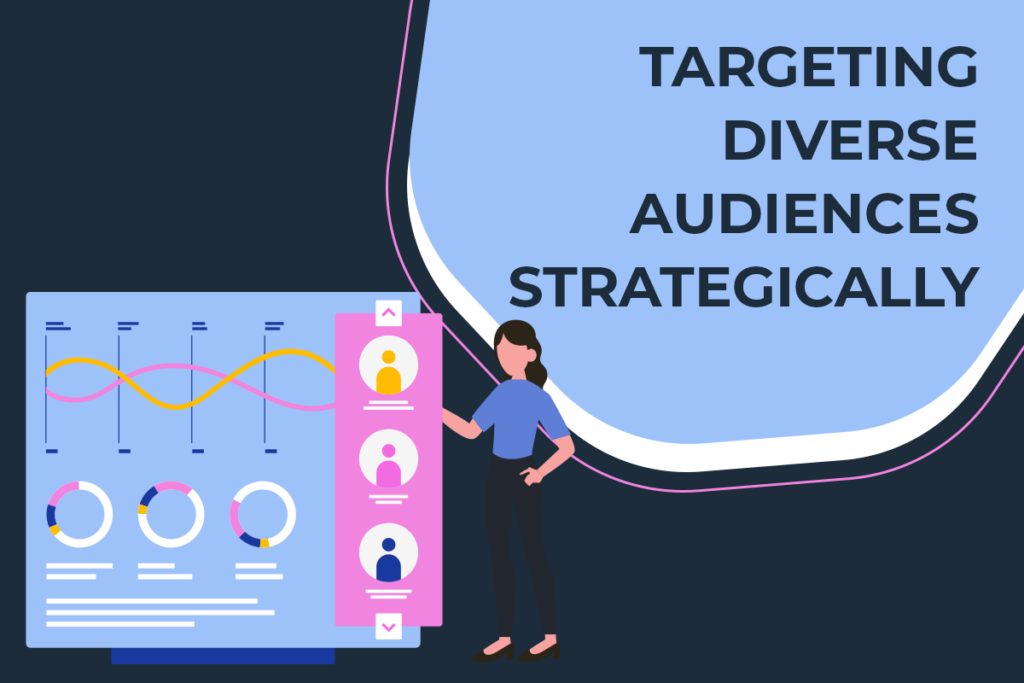
User Segmentation for App Marketing: Tailoring Your Approach for Different Audiences
I. Introduction to User Segmentation
User segmentation is a powerful strategy in the mobile app industry. It’s the process of dividing app users into groups. These groups reflect varying characteristics and behaviors. The primary goal is to understand and cater to specific subsets of your audience. By doing this, you can deliver more personalized marketing and enhance user experience.
Why does user segmentation matter for app marketing and retention? Here are a few reasons:
- Tailored Communication: Each user segment has unique needs and preferences. By identifying these, you can craft messages that speak directly to them.
- Increased Engagement: When users feel understood, they’re more likely to engage with your app.
- Higher Retention Rates: Personalized experiences make users feel valued, which can significantly reduce churn.
- Efficient Ad Spend: By targeting specific segments, your advertising budget is spent on users more likely to convert.
Statistics underscore the importance of user segmentation in mobile app marketing. According to a survey, personalized emails improve click-through rates by an average of 14% and conversions by 10%. Moreover, 74% of customers feel frustrated when website content is not personalized. These numbers highlight the critical role of user segmentation in not just attracting, but also retaining app users.
In the next sections, we’ll delve into the common ways to segment app users, the benefits of this approach, and how to create detailed audience personas. Following that, we will discuss how to optimize your app for key segments and measure the impact of your segmentation efforts. With these insights, app business owners and marketers can take their strategies to new heights.
II. Common Ways to Segment App Users
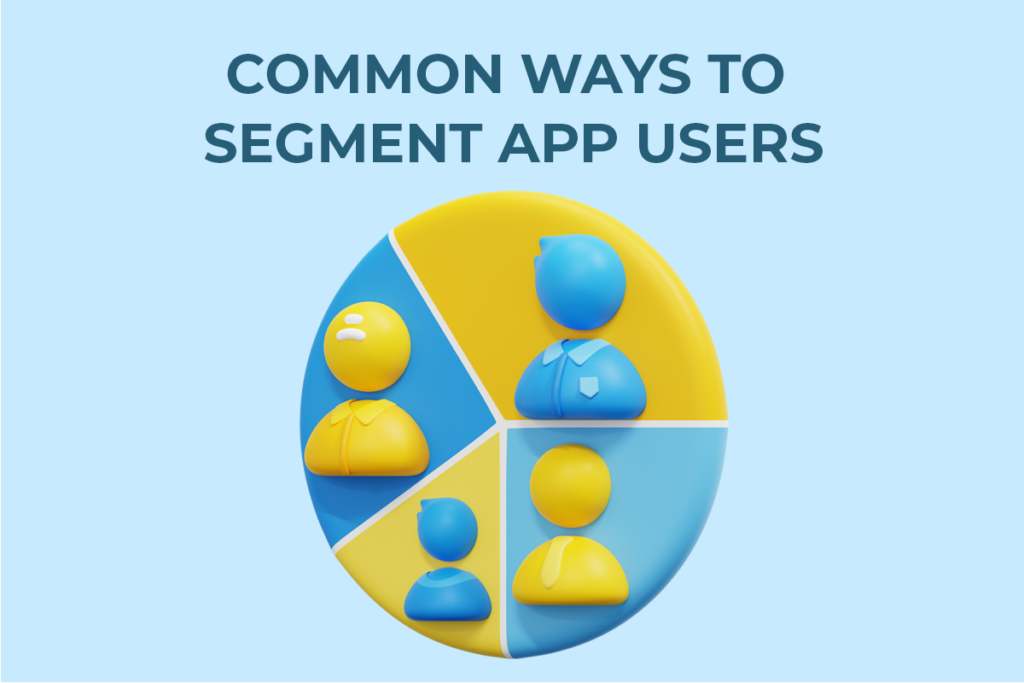
Understanding your app’s user base is vital for crafting strategies that drive engagement and retention. Now, let’s delve into the common ways to segment app users, which is a cornerstone of personalization efforts.
Demographic Segmentation
- Age: Different age groups may have varied app preferences and usage patterns. For instance, Generation Z might be more inclined towards social media and gaming apps, while older generations could prioritize productivity tools.
- Gender: This can influence how users interact with your app. For example, e-commerce apps may notice different shopping trends between men and women.
- Location: Geographic location helps tailor content to local languages, cultural nuances, and even weather conditions. An app user in a bustling city may have different needs from someone in a rural area.
Behavioral Segmentation
- Activity Level: Segmenting users by how active they are in your app can be insightful. Active users might benefit from loyalty rewards, while you could re-engage inactive users with incentives or reminders.
- Frequency of Use: Understanding how often users open your app can guide you in sending timely push notifications or offers. A daily user’s behavior will differ significantly from that of a monthly user.
Firmographic Segmentation
- Company Size: B2B apps can segment users based on the size of their business. A small startup may have different needs than a large corporation.
- Industry: Catering your app’s services or content to specific industries can greatly increase its relevance and utilization. An app serving the healthcare sector will be fine-tuned very differently from one serving retail.
By applying these segmentation strategies, you can begin to observe patterns and understand the diverse needs and preferences of your user base. Armed with this knowledge, your marketing efforts can become remarkably more effective and your app’s user experience far more satisfying.
III. Benefits of User Segmentation for App Marketing
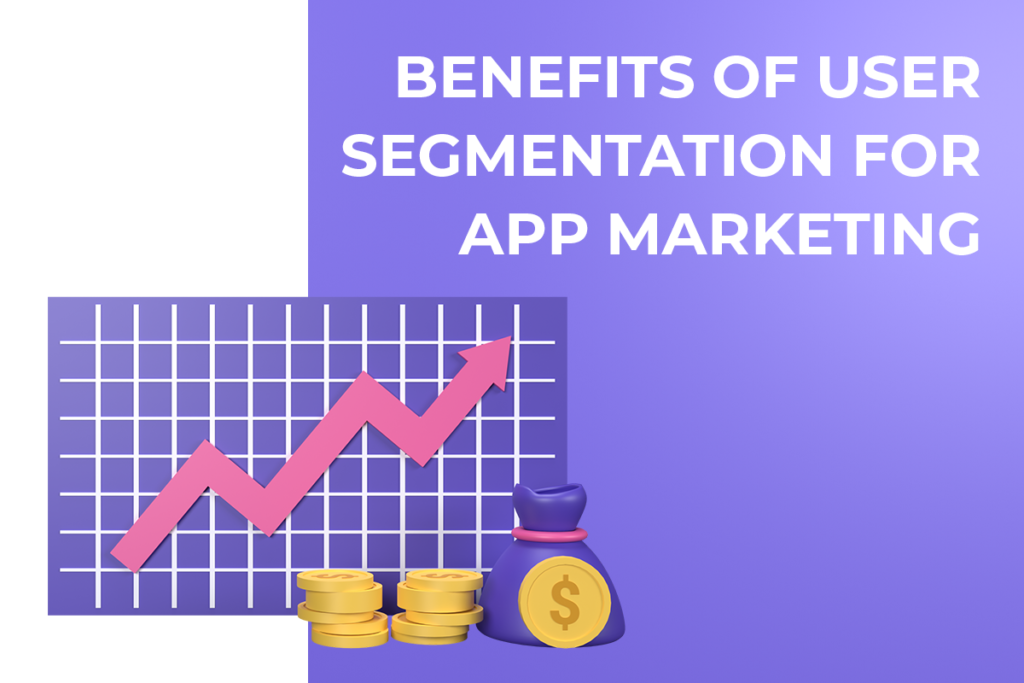
User segmentation isn’t just a buzzword in the app marketing world—it’s a cornerstone of a refined marketing strategy. At its core, the goal of user segmentation is to categorize app users into different groups based on certain characteristics. This division allows app marketers to send tailored messages, create personalized experiences, and ultimately, keep users engaged for longer.
Why User Segmentation Matters
Understanding why user segmentation is crucial for app marketing and retention is the first step to leveraging its benefits. Here’s why it matters:
- Customized Communication: By knowing which segments users fall into, app marketers can craft messages that speak directly to their preferences and behaviors.
- Enhanced Retention: Personalized experiences make users feel understood and valued, increasing their loyalty to the app.
- Efficient Use of Resources: Targeting the right people with the right messages means less waste on broad, ineffective marketing campaigns.
Benefits of User Segmentation for App Marketing
With the right approach to user segmentation, app marketers unlock a series of advantages that can propel their marketing efforts to new heights. These benefits include:
- Tailoring Messaging: When messages resonate, users pay attention. Segmentation allows for the customized communication that can lead to higher engagement rates. For example, a fitness app could send motivational messages to users who frequently log workouts, encouraging them to keep up the good work.
- Personalizing In-App Experiences: A one-size-fits-all approach rarely fits all. Segmentation leads to personalized in-app experiences that make users feel the app is designed just for them. This could mean suggesting content based on previous interactions or offering deals that align with user preferences.
- Targeting Acquisition Campaigns: By understanding who the most valuable users are, businesses can target similar prospects. This precision reduces acquisition costs and improves the chances of gaining high-quality users. For instance, if data shows that users in a certain age range are more likely to make in-app purchases, marketing efforts can be directed more heavily towards that demographic.
Statistics for Credibility
To underline the importance of user segmentation, consider these statistics:
- According to a study by Epsilon, 80% of consumers are more likely to make a purchase when brands offer personalized experiences.
- Research by Accenture indicates that 91% of consumers are more likely to shop with brands that recognize, remember, and provide relevant offers and recommendations.
- A report by Infogroup found that 44% of consumers say they will likely become repeat buyers after a personalized shopping experience.
These figures not only emphasize the significance of segmentation in marketing but also the expectations of consumers today for personalized interactions. By segmenting users, app marketers can meet these expectations and foster a positive relationship with their user base.
IV.Creating Detailed Audience Personas

Once you’ve identified your user segments, it’s time to add depth to your marketing strategy by creating detailed audience personas. This process involves taking the data you’ve gathered and building a comprehensive profile for each segment. To get started on this enlightening journey, you’ll need to:
- Collect relevant data: Use your app’s analytics tools to collect user data. This information can include how often users open the app, which features they use the most, and at what times they are most active.
- Analyze behaviors: Dive into the behaviors of each segment, noting patterns such as in-app purchase history or the types of content they engage with.
- Survey for feedback: Don’t shy away from directly asking users about their experience. Surveys can reveal invaluable insights into what users want and need from your app.
With these details in hand, you can create a rounded picture of your app’s users. Each persona should cover:
- Key Attributes: Outline basic demographic information, such as age and location. It’s these little things that can make a big difference in tailoring your approach.
- User Needs: Pinpoint what each segment is seeking in your app. Is it entertainment, efficiency, or a way to connect with others?
- Motivations: Understand why users choose your app over others. Is it the user-friendly interface or unique features?
From these snippets of information, you can assemble narrative profiles that bring your personas to life, transforming numbers and data points into relatable characters. These stories will serve as a constant reference for your team to ensure every decision keeps real-world users in mind.
Next, breathe life into these personas with a narrative. Consider:
- A Day in their Life: Create a story that walks through a typical day for your persona, highlighting when and how they interact with your app.
- Goals and Challenges: Detail the aspirations driving each persona, alongside the challenges they encounter.
- Personal Preferences: From favorite app features to disliked elements, narrate what resonates with your personas.
Constructing narrative profiles helps everyone in your team, from developers to marketers, better relate to and understand the needs of your users. As a result, you create a more user-centered app and marketing strategy that effectively engages your diverse user base.
By using this detailed roadmap, you’re now ready to deliver an unparalleled experience that not only meets but anticipates the needs of your users.
V. Optimizing Your App for Key Segments
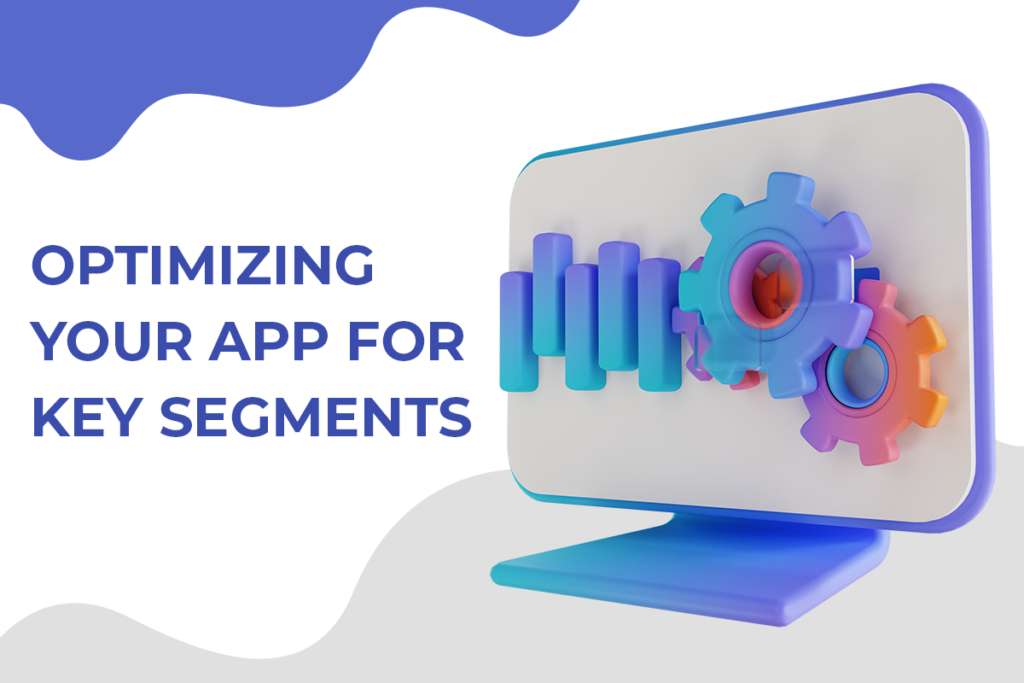
Tailoring the user experience starts with the onboarding process. It’s your first impression and sets the tone for the user’s journey. For instance:
Designing Tailored Onboarding Flows:
- Identify the needs of different segments.
- Customize onboarding steps to address those needs.
- Use language and imagery that resonate with each group.
Onboarding is a critical touchpoint. For a young, tech-savvy audience, streamline the process with quick tutorials. Conversely, for less tech-confident users, provide more guidance and reassurance.
Next, consider the app features. Each user segment may have unique requirements that can be met with:
Building Segment-Specific Features:
- Develop features targeting the pain points of each segment.
- Introduce these features during the onboarding process.
- Continuously refine features based on feedback.
For example, a productivity app could offer different tools for students and professionals. While students may need collaborative features, professionals might value task automation more.
Finally, communication shouldn’t be overlooked. Engage users with:
Crafting Targeted Push Notifications:
- Create messages that speak directly to user interests.
- Schedule notifications based on user behavior patterns.
- A/B test messages to find the most effective wording and timing.
If your app serves a global audience, sending notifications based on time zones can prevent disturbances. Also, analyze user activity to avoid notification fatigue.
By focusing on these three areas, you enhance the user experience for each segment. This leads to increased satisfaction and, ultimately, retention. Transitioning smoothly into the next topic, it’s crucial to measure the impact of these efforts.
VI. Measuring the Impact of Segmentation
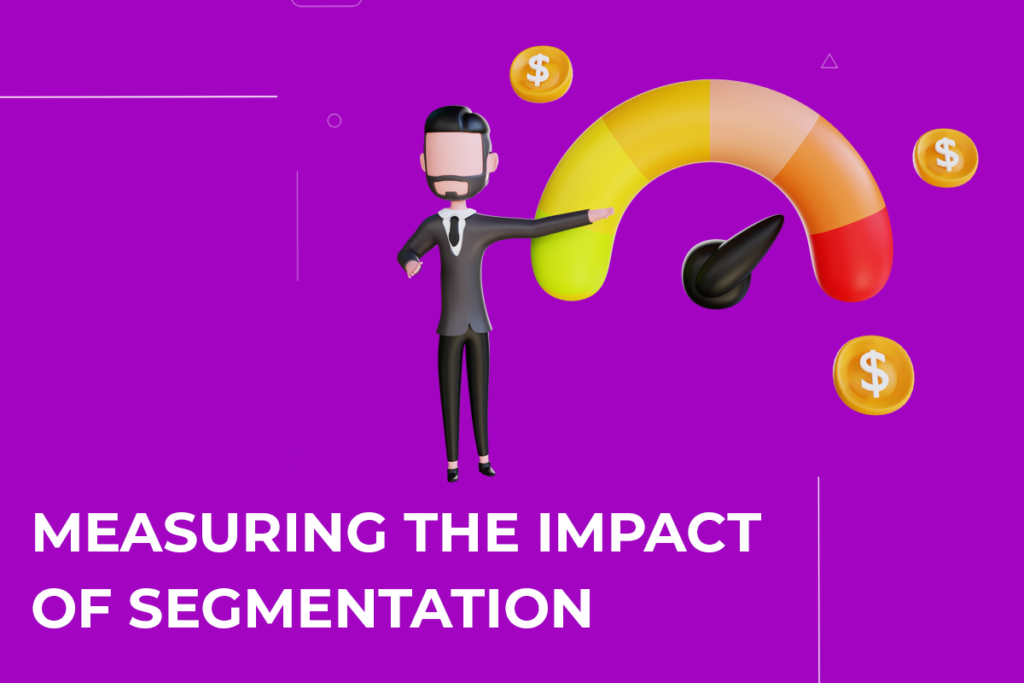
Once you’ve implemented user segmentation, the next critical step is to measure its impact on your app’s performance. The effectiveness of your segmentation strategy is quantifiable, and there are specific metrics that can provide valuable insights.
Tracking Key Metrics for Each Audience Persona
Begin by identifying which metrics best reflect the goals for each segment.
- For highly engaged users, measure retention and lifetime value (LTV).
- For new users, focus on onboarding completion rates and time to first key action.
- For lapsed users, track re-engagement rates and churn.
Keeping track of these metrics allows you to see not just the overall health of your app but also how well you are serving different groups within your user base.
Continuously Optimizing Based on Data Insights
Regularly review the performance data for each segment.
- If a segment is not meeting goals, delve deeper to understand why.
- Experiment with different marketing strategies, features, or messages.
Just as your audience is not static, neither should your approach be. Use the data you gather to refine your segmentation and to make informed decisions about product updates, marketing campaigns, and resource allocation.
Showing Improved Outcomes to Demonstrate ROI
Quantitative outcomes are key in demonstrating the value of segmentation.
- Compare conversion rates, retention rates, and revenue before and after segmentation.
- Share success stories with stakeholders to underline the benefits.
When you’re able to attribute improved outcomes directly to your user segmentation efforts, you not only justify the initial investment but also pave the way for further investment in targeted marketing strategies.
Measuring the impact of segmentation is about continuously learning what resonates with each subset of your users and leveraging those insights to improve your app and drive growth. It’s a dynamic process, one that rewards ongoing attention and creativity.
Conclusion
In summary, user segmentation is an indispensable tool for mobile app marketers, enabling personalized communication and experiences that drive user engagement and retention. By categorizing users into distinct groups based on demographics, behavior, and firmographics, marketers can tailor their strategies to meet the unique needs and preferences of their audience. Personalization is the key to standing out in a crowded app market, and segmentation provides the insights necessary to deliver relevant content, features, and messaging.
Measuring the impact of segmentation is essential to refine your approach and ensure resources are efficiently allocated. By tracking key performance metrics, continuously optimizing strategies, and demonstrating ROI, app business owners and marketers can not only meet but exceed user expectations. Ultimately, the success of an app hinges on its ability to connect with users on a personal level, and user segmentation is the roadmap to achieving that connection. Embrace segmentation, and watch your app thrive in a landscape where relevance and personalization reign supreme.
Please feel free to Contact Us in case you need any guidance regarding your app marketing needs.
FAQs about User Segmentation in App Marketing
What is user segmentation in mobile app marketing?
User segmentation is the practice of dividing the users of a mobile app into groups based on shared characteristics such as age, gender, location, user behavior, and firmographic data. This allows marketers to tailor their communication, offers, and app features to meet the specific needs and preferences of each segment.
Why is user segmentation important for my app’s marketing strategy?
User segmentation is important because it enables you to deliver personalized experiences to your users, which can increase engagement, retention, and conversion rates. By understanding and catering to the unique aspects of each segment, you can make your users feel valued and effectively target your marketing resources for better ROI.
How can I segment my app users effectively?
Start by collecting and analyzing user data from your app’s analytics tools. Look at demographics, in-app behavior, and preferences. Then, create detailed profiles for each segment. Use surveys for direct feedback, and continuously refine your segments based on user interaction and engagement with your app.
Can you provide examples of user segmentation in mobile apps?
Yes, a fitness app might segment users based on their activity level, creating a segment for those who log workouts frequently and another for casual users. An e-commerce app could segment users by purchase history and browsing behavior to offer personalized product recommendations.
What are the challenges of user segmentation?
Challenges include accurately collecting and analyzing user data, maintaining user privacy, avoiding creating too many segments that become unmanageable, and continuously updating segments as user behavior changes over time.
How do I know if my user segmentation strategy is working?
Measure the impact of your segmentation by tracking key performance metrics such as retention rates, lifetime value, onboarding completion rates, and conversion rates for each segment. Compare these metrics before and after implementing segmentation to see improvements.
What tools can I use for user segmentation?
There are various analytics and marketing platforms available that offer user segmentation features, such as Google Analytics, Mixpanel, Segment, and CleverTap. These tools can track user behavior, create segments, and even automate personalized marketing actions.
How often should I revisit and adjust my user segments?
User segments should be revisited and adjusted regularly, at least quarterly, or whenever there is a significant change in user behavior, app features, or market trends. Always be responsive to data insights and user feedback to keep your segments relevant.
Can user segmentation help with user acquisition?
Yes, by understanding the traits of your most valuable users, you can target similar prospects in your user acquisition campaigns. This helps in reducing acquisition costs and increasing the likelihood of gaining users who will have a high lifetime value.
How does user segmentation contribute to personalization?
User segmentation allows you to personalize user experiences by tailoring messages, offers, and app features to the needs and preferences of different user groups. This creates a sense of individual attention and service, which can lead to increased user satisfaction and loyalty.




0